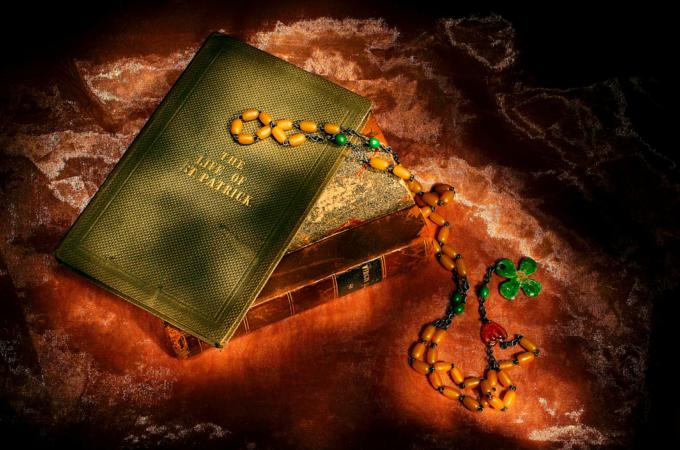Cardinal Cushing speaks on the legacy of St. Patrick
On March 13, 1954, then Archbishop Richard J. Cushing gave an address to the Ladies Auxiliary of the Ancient Order of Hibernians, highlighting the impact of St. Patrick upon Irish Catholics.
St. Patrick lived from approximately 389 to 461 AD. He was born in Roman Britain and, at the age of 16, was kidnapped and sold into slavery by Irish raiders. He remained a slave for six years before hearing a voice, which inspired his escape and subsequent training for the priesthood.
His desire to return to Ireland and spread the gospel was fulfilled when he was appointed successor to Palladius, the country's first bishop. Over the ensuing years, he travelled throughout the country, converting natives and establishing a formal ecclesiastical structure. The Cathedral at Armagh is traditionally considered his church.
Cardinal Cushing's address starts with a brief overview of the life of St. Patrick, praising his character, his embodiment of the word of Jesus Christ, and his success spreading Christianity throughout Ireland. He notes that within 25 years of work in the country, "the whole island was Catholic," and before his death, St. Patrick had consecrated 350 bishops, ordained 5,000 priests, and built more than 700 churches. He continues stating that "this was the legacy he left to his people; but a greater legacy was the memory of his saintly life, strong faith, and of his perfect trust in God."
Cardinal Cushing notes that the two traits St. Patrick instilled in the Irish people were a love of prayer and the practice of penance. It was, in fact, during a pilgrimage to Ireland that he observed people attending their local parish or shrine to pray the rosary in the evenings, inspiring him to begin broadcasting the rosary over the radio in Boston.
He recalls that even when walking through poor areas of Dublin, he witnessed the piety and charity among those who had very little. "It is easy to be holy in the cloister or in the sheltered surroundings of a comfortable home," he says, "but to see real goodness go to a room in a tenement house of Ireland or into a little country cottage and look around you. These people may have very little but thank God for those few comforts they do have and will share it with those even less fortunate than themselves."
He relates additional scenes from his visit to Ireland, recalling men leaving work and attending sodalities in the thousands, and young men and women who would visit the sick or poor after Sunday Mass. All of these scenes, he says, were inspired by St. Patrick. "It is to St. Patrick that we must trace all these characteristics of Irish spirituality and of Irish faith. . . . To all lands came the missionaries of Christianity to reveal to their people that Christ was God -- might in His poverty, powerful in His meekness, a conqueror on His Cross."
Cardinal Cushing then continues to discuss Irish immigration, stating that the "Almighty God in His mysterious wisdom permitted this nation to be flung bleeding to the four corners of the earth. . . . The dispersion of the Irish is one of the wonders of God's Providence" and should be celebrated. "Truly it is a case of God using the weak ones of the earth to confound the strong."
What he makes clear is that many of the Irish arrived on our shores penniless, friendless, helpless, but through their faith found the strength to succeed. Though they often came with nothing, their desire for places of worship and willingness to contribute their meager savings helped the Church flourish through the building of new churches, seminaries, convents, schools, and orphanages. Like St. Patrick, they spread their faith wherever they settled, continuing his mission.
- Thomas Lester is the archivist of the Archdiocese of Boston.



















